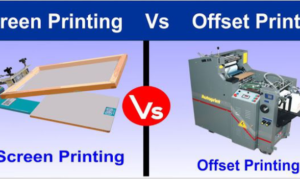According to a recent study from market research firm Global Market Insights, The thermal printing market is likely to foresee lucrative growth owing to the widespread adoption of advanced technologies and increasing use in the retail and healthcare industries. Printers employ an assortment of technologies to produce images and text on paper. Thermal printing is a kind of printing technology that utilizes heat to activate or transfer pigments.
Driven by the demand for high-quality tags and printed labels in the transportation and logistics sector, the thermal printing market is expected to grow significantly by 2026. Known for their operating speed, thermal printers are used to produce error-free, durable labels, receipts and tags. The barcode labels are used for tracking packages efficiently and inventory management.
To further increase operational efficiency and performance, thermal printer makers are incorporating advanced technologies in their products. In May 2020, major thermal printer manufacturer, Zebra Technologies announced that the artificial intelligence-based academy, Maikubo increased its staff efficiency as well as achieve accurate, faster asset tagging and equipment management by adopting the firm’s ZT400 series RFID printer.
Based on product type, the market is divided into POS printers, RFID printers, card printers, barcode printers and kiosk & ticket printers. Of these, the RFID printer segment is anticipated to do exceptionally well over the upcoming years owing to their ability to integrate seamlessly into warehouse, manufacturing and logistics operations.
RFID printers print 1D and 2D barcodes along with human readable information, numbers and graphics. They are being preferred by several industries for precise data collection and quick identification of huge volumes of tagged items.
Use of such modern solutions and of Automatic Identification & Data Capture technologies across various industries is fueling the demand for thermal printers. According to Global Market Insights, Inc., the thermal printing market is projected to grow over USD 50 billion by 2026.
In terms of technology, the overall thermal printing market is bifurcated into dye diffusion thermal transfer, thermal transfer, and direct thermal. The advantages of high-quality image results with Dye Diffusion Thermal Transfer, which will drive the thermal printing industry. This process of printing uses thermal transfer for transporting diverse amounts of colored dye pigments from a film or a carrier ribbon, to the PVC printing surface where the dyes bond chemically.
With respect to application, the thermal printing market is segmented into entertainment & hospitality, government, healthcare, manufacturing, transportation & logistics, retail, and others. Rapid adoption of remote surgery and consultation among healthcare professionals will drive the demand for thermal printing in the healthcare sector. Since hospital and other healthcare services have to continuously deal with substituting as well as maintaining the expensive equipment, these inexpensive thermal printers have become one of the best solutions for equalizing these expenses.
Thermal printers are being used in the sector given to their ability to produce sharp print images which can withstand a range of weather conditions, provide real-time tracking for better supply chain management and rapid operating speed that increases productivity.
Geographically speaking, Asia Pacific thermal printing industry is estimated to grow owing to the expanding consumer electronics industries in Japan and China, where thermal printers are being adopted for labeling barcode tags on electrical components and electronics.
Key Companies covered in Thermal printing industry are Avery Dennison Corporation, Axiohm TXCOM, Bixolon Co., Ltd., Brother Industries, Ltd., Citizen Systems, CognitiveTPG, LLC, Fujitsu Ltd., Honeywell International Inc., NCR Corporatio, Pro Mach Inc., Rongta Technology (Xiamen) Group Co., Ltd., Sato Holdings Corporation, Seiko Epson Corporation, Seiko Instruments GmbH, Shinmei Co., Ltd., Star Micronics Co., Ltd., Toshiba Corporation, TransAct Technologies Incorporated, TSC Auto ID Technology Co., Ltd, Zebra Technologies Corp.



































